Smithsonian Scholars Pick Their Favorite Books of 2021
The writings of many fine authors support the research and ambitious undertakings of an Institution rising to the challenges ahead
:focal(700x527:701x528)/https://tf-cmsv2-smithsonianmag-media.s3.amazonaws.com/filer_public/0c/67/0c670fe1-3f6c-400d-8736-852cf3f53ca4/inarticle-curatorspicks-books2021-1400w.jpg)
Visitors often entertain the romantic notion that behind-the-scenes at a Smithsonian museum is a mind-bending alternate universe that far surpasses anything they might encounter in the exhibition galleries. And they are not entirely wrong. The hundreds of men and women, who haunt the backroom warren of offices, libraries, laboratories and storage spaces at the largest museum and research complex in the world together form the intellectual wellspring of the Smithsonian Institution’s world-class exhibitions, events and happenings, scientific endeavors, and so much more.
This year the Institution celebrated its 175th anniversary with a ground-breaking new exhibition "Futures" to explore the multivalent theme that humans can have agency in crafting a better tomorrow. A new initiative, “Our Shared Future: Reckoning with Our Racial Past,” is seeking to expand public understanding of how racism blights our country. In this year also, the Smithsonian is shouldering a massive expansion after 2020 legislation enacted two new museums—the National Museum of the American Latino and the American Women’s History Museum. Exciting new artifacts are entering the collections even now as a rising cadre of new curatorial expertise is taking shape. And finally, staff brought multiple museums to life again, reopening gallery spaces and new exhibitions after months of pandemic-related closures.
Every year, Smithsonian magazine invites dozens of Smithsonian Institution professionals to share what they found most enticing of the year’s best books. It is evident that to the challenges Americans are facing—global climate change, racial barriers and inequality, a democracy in crisis—scholars are bringing their best game. Their readings of memoirs, novels, historical analysis and archival explorations may just prove to be must-reads for generations to come.
All That She Carried: The Journey of Ashley's Sack, a Black Family Keepsake
Recommended by Paul Gardullo, director, Center for Global Slavery, National Museum of African American History and Culture
Encountering Ashley’s sack, the artifact, for the first time in 2009 at the museum’s Save Our African American Treasures program in Charleston, South Carolina, is burned into my memory. I have sat with this small piece of fabric that had been hurriedly packed with survival goods and stitched with the words "It be filled with Love always." For more than ten years, it has remained at the center of many of my museum talks. I have had dreams about it and the lives of the family members, Ruth, Ashley and Rose. Countless people have visited with it in Washington, D.C. and South Carolina to witness its powerful presence. God bless Tiya Miles for giving us this beautiful, heartbreaking book about this simple object that a mother gave her daughter before they were to be sold away and a granddaughter who embroidered and made visible its enduring message of love. Miles finds it bottomless because it is filled with love across generations that cannot be quenched by slavery. The author puts her whole heart and soul all the way into it. This amazing work of history charts a path forward for how we can and should expand ways of writing about histories excluded from the archives by racism. It is an amazing work of research coupled with imagination, generosity, community, care and love. This soul stirring book is a fitting testament to the determination and full lives of the women who crafted it. It should be on everyone’s reading list.
All That She Carried: The Journey of Ashley's Sack, a Black Family Keepsake
A renowned historian traces the life of a single object handed down through three generations of Black women to craft an extraordinary testament to people who are left out of the archives.
Martita, I Remember You/ Martita, te recuerdo: A Story in English and Spanish
Recommended by Tey Marianna Nunn, director, American Women's History Initiative
Sandra Cisneros, is an author who excels at telling the stories of women of all generations. Her latest book, Martita, I Remember You / Martita, te recuerdo is an homanaje (homage) to the power of women’s friendships and the connections and support that come with those relationships. As a Latina cultural historian and interdisciplinary scholar, the book really resonates with me, as I reflect on the roles of women in history and culture, especially in a year when the planning for a new Smithsonian American Womens’ History Museum has commenced. Women are often historically celebrated for their singular achievements and all too often we forget the stories of the friends and fellow supporters who helped them along their journey. The characters in Cisneros’ novel help us to remember the significance of relationships in building shared histories.
Martita, I Remember You/Martita, te recuerdo: A Story in English and Spanish
In this masterfully written dual-language edition, a long-forgotten letter sets off a charged encounter with the past.
We Had a Little Real Estate Problem: The Unheralded Story of Native Americans & Comedy
Recommended by Ryan Lintelman, curator of entertainment, division of cultural and community life, National Museum of American History
Kliph Nesteroff’s groundbreaking book is at once an indictment of the entertainment industry’s systemic failure to recognize Indigenous talent, a celebration of those Native comedians who have fought to break through racial barriers, and a lively and engaging exploration of the modern American Indian comedy scene. As curators at the National Museum of American History are preparing major new exhibitions on the history of entertainment and popular culture, books like this have been invaluable resources to help us understand the full complexity of Native peoples’ vibrant and adaptive culture and their contributions to our shared history of entertainment.
We Had a Little Real Estate Problem: The Unheralded Story of Native Americans & Comedy
In We Had a Little Real Estate Problem, acclaimed comedy historian Kliph Nesteroff focuses on one of comedy’s most significant and little-known stories: how, despite having been denied representation in the entertainment industry, Native Americans have influenced and advanced the art form.
Hola Papi: How to Come Out in a Walmart Parking Lot and Other Life Lessons
Recommended by David Coronado, senior communications officer, Smithsonian Latino Center
Underneath the warmth and humor of John Paul Brammer’s self-deprecating memoir is a study on the childhood traumas that gay Latinx men endure and internalize. Brammer deftly illustrates his experiences to help readers understand the intersections of our identities, how we show up in multiple spaces and the cost of assimilation. This book will resonate with intergenerational audiences who have ever felt othered and sometimes unwanted.
Hola Papi: How to Come Out in a Walmart Parking Lot and Other Life Lessons
In this hilarious, tenderhearted book, JP shares his story of growing up biracial and in the closet in America’s heartland, while attempting to answer some of life’s most challenging questions: How do I let go of the past? How do I become the person I want to be? Is there such a thing as being too gay? Should I hook up with my grade school bully now that he’s out of the closet? Questions we’ve all asked ourselves, surely.
The Arbornaut: A Life Discovering the Eighth Continent in the Trees Above Us
Recommended by Jeffrey Stine, curator of environmental history, National Museum of American History
The need to save Earth’s forests has never been greater. Meg Lowman’s enthralling memoir The Arbornaut offers a call for action supported by vivid descriptions of field biology and the challenges faced by female scientists around the world. Lowman pioneered the field of canopy ecology, the study of the little-known world high in the treetops above us, where some 50 percent of terrestrial biodiversity exists, yet where 90 percent of its species is unknown to science.
The Arbornaut: A Life Discovering the Eighth Continent in the Trees Above Us
A blend of memoir and fieldwork account, The Arbornaut gives us the chance to live among scientists and travel the world―even in a hot-air balloon! It is the engrossing, uplifting story of a nerdy tree climber―the only girl at the science fair―who becomes a giant inspiration, a groundbreaking, ground-defying field biologist, and a hero for trees everywhere.
The Code Breaker: Jennifer Doudna, Gene Editing, and the Future of the Human Race
Recommended by Vilma Ortiz-Sanchez, museum educator, National Museum of the American Indian
Through the captivating biography of Jennifer Doudna, who won the 2020 Nobel Prize in chemistry, Walter Isaacson explains one of the most complex and fascinating biological processes of CRISPR, or clustered regularly interspaced short palindromic repeats, a way to edit DNA that offers one of the most extraordinary possibilities for our lives in the future. It makes us think of all the possibilities science can offer to treat diseases and genetic conditions—an example is the quick development of the Covid-19 vaccine.
The Code Breaker: Jennifer Doudna, Gene Editing, and the Future of the Human Race
The bestselling author of Leonardo da Vinci and Steve Jobs returns with an account of how Nobel Prize winner Jennifer Doudna and her colleagues launched a revolution that will allow us to cure diseases, fend off viruses, and have healthier babies.
How the Word Is Passed: A Reckoning with the History of Slavery Across America
Recommended by Chris Wilson, director, Experience Design, National Museum of American History
As the nation simultaneously nears its 250th birthday and the moment when it will become a majority-minority nation, it’s understandable an increasingly diverse society would struggle with historical memory in public spaces, especially related to issues like slavery in America. As we navigate the challenges related to examining and rethinking what we remember about slavery, there is no better guide and teacher than historian and poet Clint Smith, who masterfully explores our complicated and spotty memory of the institution that was fundamental and defining in American history. In How the Word is Passed, Smith wields his words like a virtuoso musician in concert. He takes the reader with him to eight places in the United States and one abroad to explore how each understands and reckons with its relationship to slavery—either as truthtelling, running away from it, or doing something in between. At a moment when the nation suddenly and surprisingly developed a willingness to re-examine how it rejects history in favor of comforting nostalgia, but also at a moment when manufactured issues of “unpatriotic” history drove political races across the country, Smith’s stellar work is indispensable.
How the Word Is Passed: A Reckoning with the History of Slavery Across America
Beginning in his hometown of New Orleans, Clint Smith leads the reader on an unforgettable tour of monuments and landmarks—those that are honest about the past and those that are not—that offer an intergenerational story of how slavery has been central in shaping our nation’s collective history, and ourselves.
Culture Strike: Art and Museums in an Age of Protest
Recommended by Theo Gonzalves, interim director, Asian Pacific American Center
Laura Raicovich’s Culture Strike: Art and Museums in an Age of Protest reminds me of Howard Zinn’s memoir, You Can’t Be Neutral on a Moving Train. Too many of us think that museums should be stationary, stately and nostalgically locked into a gauzy version of the past. Raicovich’s stories about the nuts and bolts of what it means to lead a museum should be required reading for anyone thinking about how these cultural institutions are places that we need to fill with the noisy and inspiring stories of resistance, solidarity and mutual aid. In the age of “truthiness” and “fake news,” Raicovich’s work reminds us how museums—especially history museums—can play a role in helping us connect our shared pasts to our shared futures.
Culture Strike: Art and Museums in an Age of Protest
A leading activist museum director explains why museums are at the center of a political storm.
The Age of Acrimony: How Americans Fought to Fix Their Democracy, 1865-1915
Recommended by Peter Liebhold, curator emeritus, division of work and industry, National Museum of American History
Are you frustrated by the decline of democracy as reported on cable news? Well take a break and read The Age of Acrimony from Smithsonian's Jon Grinspan, a political historian at the National Museum of American History. You will be surprised to learn that today's anti-democratic chaos is nothing new. For those that love the messy politics of the Gilded Age or the complicated history of industrial capitalism, this book will prove fascinating. Grinspan tells a surprising story through the experiences of a father-daughter duo William “Pig Iron” Kelly (a working-class radical, Republican member of Congress and ardent supporter of protective tariffs) and Florence Kelly (a reformer pushing for child-labor restrictions and founder of the National Consumer League). Grinspan’s history is wonderfully nuanced and balanced. Rigorous but not turgid, the book paints a picture where the good guys are not always pure, and sometimes do bad things. The book might anger you at the late 19th-century push for a more deliberate electorate (code for marginalizing immigrants and people of color), but will give you hope that today’s problems are not as apocalyptic as they sometimes feel. After all, the nation survived.
The Age of Acrimony: How Americans Fought to Fix Their Democracy, 1865-1915
The Age of Acrimony charts the rise and fall of 19th-century America’s unruly politics through the lives of a remarkable father-daughter dynasty. The radical congressman William “Pig Iron” Kelley and his fiery, Progressive daughter Florence Kelley led lives packed with drama, intimately tied to their nation’s politics.
Where the Deer and the Antelope Play: The Pastoral Observations of One Ignorant American Who Loves to Walk Outside
Recommended by Cat Kutz, communications, Conservation Commons and Earth Optimism
I'd been hoping for something wildly different from the conventional reads in the nonfiction category this year, and Nick Offerman delivered. The actor and comedian, best-known for his role as Ron Swanson in the wildly popular network series, "Parks and Rec," reminds you again after again that he's not a naturalist, just some well-meaning dodo who really enjoys the outdoors. Offerman's thoughtful and hilarious musings at the nexus of human life and nature, particularly through the lens of John Muir and Aldo Leopold (If your water bottle quotes Muir's "the mountains are calling," do take a deeper dive into the great naturalist's works), makes for a much more approachable read than the year's more science-heavy, environmental philosophy or ecology books, and serves another welcome reminder that nature is for all.
Where the Deer and the Antelope Play: The Pastoral Observations of One Ignorant American Who Loves to Walk Outside
A humorous and rousing set of literal and figurative sojourns as well as a mission statement about comprehending, protecting, and truly experiencing the outdoors, fueled by three journeys undertaken by actor, humorist, and New York Times bestselling author Nick Offerman.
From Football to Soccer: The Early History of the Beautiful Game in the United States (Sport and Society)
Recommended by Christopher Warren, director of curatorial affairs, National Postal Museum
Fascination for the "Beautiful Game" in the last 30 years has seen an exponential growth in the United States. The 1994 World Cup staged throughout the nation, the success of the U.S. Men’s and Women’s national teams, and the future return of the World Cup to the U.S. in 2026, have all served to amplify soccer’s visibility and appeal to the American public. While the international history of soccer—or "football" as it’s known to most of the world—is well-known, many fans of the modern game are unaware that the sport has a long history in the U.S. Brian Bunk’s excellent book examines kicking games played by Native peoples and colonists, the rise of professional soccer after World War I, how the sport gave women an outlet as athletes, and how the game encouraged men to form social bonds based on educational experiences, occupation, ethnic identity or military service. Bunk shows how the integration of soccer into universities, along with the arrival of immigrants from the British Isles, helped to spark the creation of organized soccer and helped to transform the game into an international sport.
From Football to Soccer: The Early History of the Beautiful Game in the United States (Sport and Society)
A multilayered look at one game’s place in American life, From Football to Soccer refutes the notion of the U.S. as a land outside of football history.
The Ledger and the Chain: How Domestic Slave Traders Shaped America
Recommended by Alexandra Piper, program manager, office of audience engagement, National Museum of American History
Slavery's long shadow over American history is constantly changing and shaping our understandings of the nation's ideals, freedom and progress. In The Ledger and the Chain, historian Joshua Rothman meticulously explores another repulsive aspect of slavery: the business and practices of the slave traders who brutally trafficked thousands of human beings across the country in the 19th century. Through the lives and careers of Isaac Franklin, John Armfield and Rice Ballard, three slave traders of the era, Rothman illuminates the economic expansion and profitability of the forced labor market that brought prosperity to the United States. Rothman’s history reveals the slave traders' sickening enjoyment over their successes, at the cost of Black people’s families, freedoms and lives. It is a challenging history, but it is a reality from which we must not ever turn away.
The Ledger and the Chain: How Domestic Slave Traders Shaped America
An award-winning historian reveals the harrowing forgotten story of America's internal slave trade—and its role in the making of America.
Firekeeper's Daughter
Recommended by Amanda E. Landis, librarian, John Wesley Powell Library of Anthropology, National Museum of Natural History
I host the Black, Indigenous, and People of Color (BIPOC) Fiction Book Club for Smithsonian Libraries and Archives, a quasi-monthly meeting that focuses on literature by BIPOC authors, who write from their own perspective and experiences. My favorite book-club pick was the young adult novel by the new breakout Chippewa author Angeline Boulley (Sault Ste. Marie Tribe of Chippewa Indians). Marketed as a thriller, Boulley’s debut novel is about Daunis Fontaine, a bright, biracial teenager working to solve a dangerous crime impacting her Ojibwe community. In Boulley's deft hands, an incredibly rich and layered story emerges about a young woman's struggle to forge an identity, and to gain acceptance in a society that has marked her as an outcast from birth, as she works to protect the community she loves. It is an intense, timely novel that will break your heart before it mends it back together again.
Firekeeper's Daughter
Eighteen-year-old Daunis Fontaine has never quite fit in, both in her hometown and on the nearby Ojibwe reservation. She dreams of a fresh start at college, but when family tragedy strikes, Daunis puts her future on hold to look after her fragile mother. The only bright spot is meeting Jamie, the charming new recruit on her brother Levi’s hockey team.
Inter State: Essays from California
Recommended by Adriel Luis, curator of digital and emerging practice, Smithsonian Asian Pacific American Center
The sumptuously-written Inter State is a hybrid of memoir with a California atlas. Through his essays, poet-skateboarder and journalist José Vadi invites readers to experience his relationship with the Golden State, weaving nostalgia and aspiration as he travels its pockets and byways. I especially love how Vadi depicts the unique, casual, sometimes tense nature of diversity in the Bay Area—it reminds me of my appreciation for initiatives like the Smithsonian Asian-Latino Project, which explores intersections through performance, workshops and other events, to draw complex connections between culture and knowledge.
Inter State: Essays from California
California has been advertised as a destiny manifested for those ready to pull up their bootstraps and head west across to find wealth on the other side of the Sierra Nevada since the 19th century. Across the seven essays in the debut collection by José Vadi, we hear from the descendants of those not promised that prize.
The Fires of Philadelphia: Citizen-Soldiers, Nativists, and the 1844 Riots Over the Soul of a Nation
Recommended by Timothy Winkle, curator, division of culural and community life, National Museum of American History
In his timely book, historian Zachary M. Schrag takes on another period in this country's history when Americans were sharply, even violently, at odds over immigration, economic opportunity, racial justice, the integrity of elections, the role of law enforcement, even what could be taught in public schools. Schrag explores antebellum Philadelphia and the cultural, religious and political tinderbox that would ignite “the first great riot in the history of the United States,” a series of violent outbreaks over the summer of 1844 when xenophobic Nativist mobs launched attacks on Irish Catholics that saw dozens killed, churches burned and volunteer militias trading cannon fire with rioters for control of the streets. Schrag’s deep research and command of detail reads like moment-by-moment reportage, while at the same time, he skillfully introduces the players in this crisis, exposes the deeper rifts that brought Philadelphia into open warfare, and navigates the aftermath, in which the effectiveness of the police came under scrutiny.
The Fires of Philadelphia: Citizen-Soldiers, Nativists, and the 1844 Riots Over the Soul of a Nation
At a time many envision America in flames, The Fires of Philadelphia shows us a city—one that embodies the founding of our country—that descended into open warfare and found its way out again.
You Are the Best Thing: Vulnerability, Shame Resilience and the Black Experience
Recommended by Ariana Curtis, director of content, Our Shared Future: Reckoning with Our Racial Past
Vulnerability can be powerful, but the question remains: “How do you take the armor off in a country where you’re not physically or emotionally safe?” The contributors to this book, edited by Tarana Burke and Brené Brown, have laid their truths bare in an intimate collection of personal essays. I chose the audio book where many authors read their own work. Racism is traumatic. I acknowledge and honor these writers because they literally give voice to Black humanity, joy, liberation, shame, the paradox of Black vulnerability, and the expectations of resilience. The Smithsonian’s Our Shared Future: Reckoning with Our Racial Past initiative, like this book, wants to go deep. Stories are powerful tools. Reckoning with our past includes understanding “difficult" histories and their legacies. It is also means listening, without judgement, to experiences like, and unlike, our own. It means candidly exploring the enduring material and psychological impacts of racism on the everyday lives of individuals and communities. In that journey, this anthology is affirming and instructive for us all.
You Are Your Best Thing: Vulnerability, Shame Resilience, and the Black Experience
Tarana Burke and Brené Brown are the perfect pair to usher in this stark, potent collection of essays on Black shame and healing. Along with the anthology contributors, they create a space to recognize and process the trauma of white supremacy, a space to be vulnerable and affirm the fullness of Black love and Black life.
American Independent Inventors in an Era of Corporate R&D
Recommended by Arthur Daemmrich, director, Lemelson Center for Study of Invention and Innovation, National Museum of American History
The 20th century is usually described as an era of large organizations, incremental innovation, and the “organization man.” But Smithsonain historian Eric Hintz tells stories and analyzes the experiences of women, minorities and other independent inventors who forged their own paths. Alternating between the legal, social and economic context on one hand and the specific experiences of inventors on the other, this book offers a new take on paths to becoming an inventor and how they change our lives.
American Independent Inventors in an Era of Corporate R&D
During the nineteenth century, heroic individual inventors such as Thomas Edison and Alexander Graham Bell created entirely new industries while achieving widespread fame. However, by 1927, a New York Times editorial suggested that teams of corporate scientists at General Electric, AT&T, and DuPont had replaced the solitary "garret inventor" as the wellspring of invention. But these inventors never disappeared.
Beyond the Betrayal and Not Yo' Butterfly
Recommended by Sojin Kim, curator, Smithsonian Center for Folklife and Cultural Heritage
These memoirs by two icons of Asian American activism chronicle lives defined by brave radical acts of conscience and empathy. They suggest, too, the powerful role of youth in transformational movements. When the U.S. entered World War II and the government forced Japanese Americans into camps, Yoshito Kuromiya was a teenager studying art and Nobuko Miyamoto was a toddler. Born in Los Angeles, each was indelibly shaped by the history of removal and incarceration particular for their generation and gender. Kuromiya eventually became a landscape architect. Drawings he made while incarcerated in Heart Mountain, Wyoming, are in the permanent collection of the National Museum of American History. In 1973, Miyamoto co-created what is considered the first album of Asian American music. Her 1973 album as well as a new one released in 2021 are in the Smithsonian Folkways catalog.
Beyond the Betrayal: The Memoir of a World War II Japanese American Draft Resister of Conscience
Beyond the Betrayal is a lyrically written memoir by Yoshito Kuromiya (1923–2018), a Nisei member of the Fair Play Committee (FPC), which was organized at the Heart Mountain concentration camp.
Not Yo' Butterfly: My Long Song of Relocation, Race, Love, and Revolution (Volume 60) (American Crossroads)
Beginning with the harrowing early years of her life as a Japanese American child navigating a fearful west coast during World War II, Miyamoto leads readers into the landscapes that defined the experiences of twentieth-century America.
What Folklorists Do: Professional Possibilities in Folklore Studies
Recommended by Jim Deutsch, curator of folklife and popular culture, Smithsonian Center for Folklife and Cultural Heritage
Many of us at the Smithsonian Center for Folklife and Cultural Heritage often hear the question: “What does a folklorist do?” The 76 brief essays in this book provide the answer, which, in short is, that we do almost everything, including advocating, archiving, communicating, consulting, curating, organizing, partnering, performing, preserving, researching, teaching and writing in diverse settings from business and technology to education and government. As Walt Whitman might say: “We contain multitudes.”
What Folklorists Do: Professional Possibilities in Folklore Studies
What can you do with a folklore degree? Over six dozen folklorists, writing from their own experiences, show us.
On Time and Water
Recommended by Nick Pyenson, curator of fossil marine mammals, department of paleobiology, National Museum of Natural History
How do we memorialize a world that our descendants and successors won't experience? Iceland's celebrated author Andri Snær Magnason, who might be best described as a "poet laureate for ice," sketches a portrait of loss from his homeland, which has already experienced some of the world's most dramatic changes, yet, in this era of global climate change. In an occasionally challenging read, On Time and Water weaves meditations on the geologic-like anatomy of glaciers and the timeline of their disappearance with an intimate tour of his own family and their lives. The most poignant moment is a thought experiment that Magnason offers his daughter, using handshakes: if we tally up the lifetimes of the people we have known before us and after, from grandparents to those unborn, we'll discover that our reach extends far outside our own short lives—sometimes centuries, if we're lucky. For those who may remember us in the next century, Magnason’s message is best summarized in his epigraph left at the site of the now-extinct Ok glacier: "We know what is happening and what needs to be done. Only you know if we did it." May we be those good ancestors who act.
On Time and Water
On Time and Water is both deeply personal and globally-minded: a travel story, a world history, and a desperate plea to live in harmony with future generations.
Pollution Is Colonialism
Recommended by Joshua Bell, curator of globalization, department of anthropology, National Museum of Natural History
This book is an insightful and compelling examination of the work of the Civic Laboratory for Environmental Action Research (CLEAR) which is an anti-colonial science laboratory in Newfoundland, Canada. In charting CLEAR’s work on plastic pollution, Max Liboiron demonstrates how science can and should be informed by Indigenous ethics and ways of understanding relations. The result is a beautifully written text that is both a handbook on method and a call to rethink how we live our lives on occupied land.
Pollution Is Colonialism
In Pollution Is Colonialism Max Liboiron presents a framework for understanding scientific research methods as practices that can align with or against colonialism.
Nonviolence Before King: The Politics of Being and the Black Freedom Struggle
Recommended by Joshua Gorman, head of collections management, museum registrar, National Museum of American History
Anthony Siracusa’s archival exploration of nonviolence in the Black freedom struggle dramatically expands our understanding of the American development of the concept, it’s connection to the legal strategies of the movement, and it’s durability in the rise of Black Power through to today. Connecting the more well-known expressions of mid-century nonviolent movements to crucial, early groups such as the fellowship of reconciliation, Siracusa shows the central importance of lesser-known actors such as Howard Thurman, the Reverend Bill Lawson and Dr. Pauli Murray to the development, expression and expansion of nonviolence in the struggle. Threading a readable narrative from previously unconnected archival sources, the author shows how this should be part of the larger story we tell of the Civil Rights Movement.
Nonviolence Before King: The Politics of Being and the Black Freedom Struggle
In this book, Anthony C. Siracusa unearths the deeper lineage of anti-war pacifist activists and thinkers from the early twentieth century who developed nonviolence into a revolutionary force for Black liberation.
Science Denial: Why It Happens and What to Do About It
Recommended by Briana Pobiner, paleoanthropologist, Human Origins Program, National Museum of Natural History
We continue to wring our hands in 2021 at the frustrating and seemingly baffling increase of anti-science and anti-expertise sentiment in the United States, even in the face of an ongoing deadly pandemic. Why is this happening? Why does it matter? And what can we do about it? Psychologists Gale Sinatra and Barbara Hofer outline evidence-based psychological explanations for science denial and science skepticism based on peer-reviewed studies, including cognitive biases, epistemic cognition, social identity, motivated reasoning, emotions and attitudes. They also provide accessible and practical guidance, often through realistic scenarios, for individuals, science educators, science communicators (including scientists) and policy makers, to combat science denial, doubt, misinformation and disinformation. This book is a must-read for anyone interested in understanding and challenging anti-science biases in others… or even themselves.
Science Denial: Why It Happens and What to Do About It
This book explains both the importance of science education and its limitations, shows how science communicators may inadvertently contribute to the problem, and explains how the internet and social media foster misinformation and disinformation.
The Sweetness of Water
Recommended by Stephanie Stebich, director, Smithsonian American Art Museum
I read a great deal of fiction as a complement to the many art exhibition catalogues I peruse. This year Nathan Harris’s The Sweetness of Water captured my imagination with the vivid characters the author drew and the poignant yet explosive narrative he created. The societal constraints around relationships between races and among the sexes in a post-Civil War world reminds us of the great potential yet unfilled promises of that time and our present moment. Every reader conjures up a vision of the main characters for themselves. This was made easier for me with Smithsonian American Art Museum's recent acquisition of the Larry J. West collection of rare early African American photography including Civil War and Reconstruction era portraits.
The Sweetness of Water
With candor and sympathy, debut novelist Nathan Harris creates an unforgettable cast of characters, depicting Georgia in the violent crucible of Reconstruction.
Dear Science and Other Stories (Errantries)
Recommended by Orlando Serrano, manager, youth and teacher programs, National Museum of American History
Katherine McKittrick's book about Black livingness and Black knowledge is a mind-altering and world-bending read that rarely leaves my side. I turn to it constantly, as a way to recognize the world that the Black studies tradition is constantly building. A gender studies scholar at Queens University in Canada, McKittrick weaves together multiple disciplines across the social sciences in a series of essays, or stories as she calls them. She looks to the Black studies tradition as a guide for other academics and those interested in interrogating the world around them. To her, just describing the world does not lead to liberation from the oppression of the world and she delves further into the lasting warning of Black philosopher Sylvia Wynter to not confuse the map for the territory. This tract is a must-read for anyone interested in finding alternative ways of being and knowing rooted in abolition.
Dear Science and Other Stories (Errantries)
Drawing on Black studies, studies of race, cultural geography and Black feminism as well as a mix of methods, citational practices, and theoretical frameworks, Katherine McKittrick positions Black storytelling and stories as strategies of invention and collaboration.
A Note to our Readers
Smithsonian magazine participates in affiliate link advertising programs. If you purchase an item through these links, we receive a commission.
/https://tf-cmsv2-smithsonianmag-media.s3.amazonaws.com/accounts/headshot/Beth_Head_Shot_High_Res-14-v2.png)
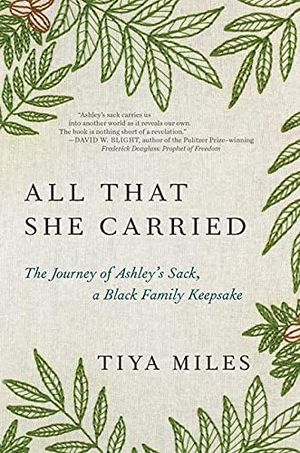
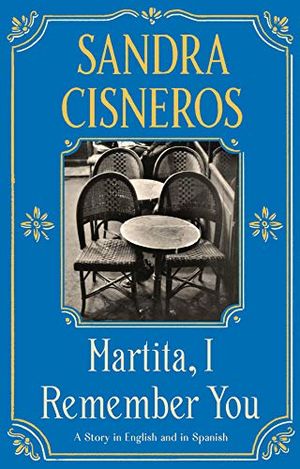
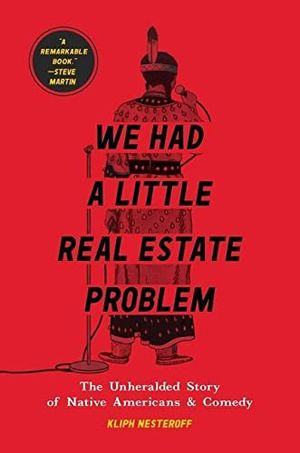
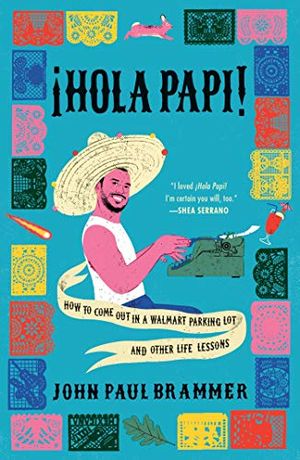
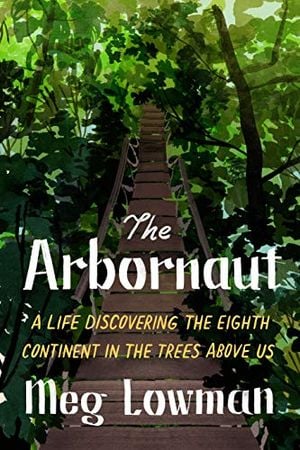
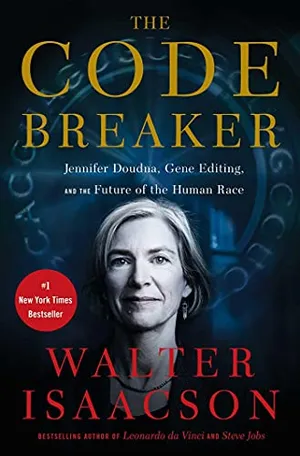
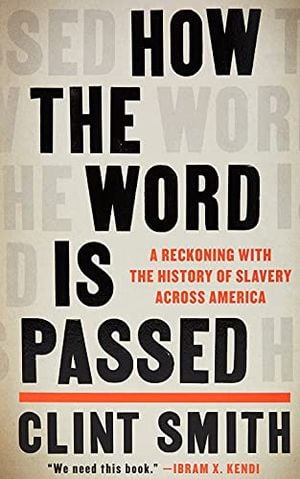
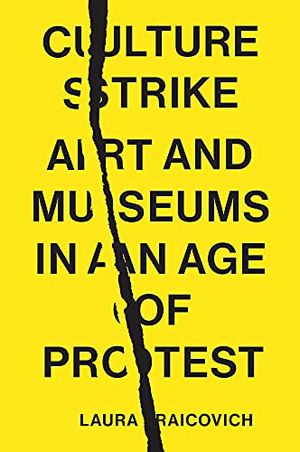
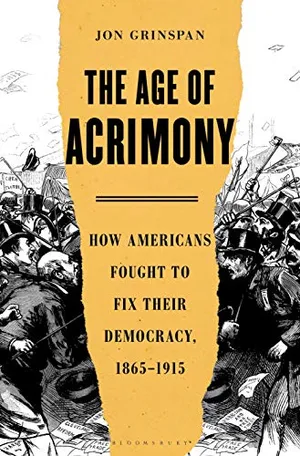
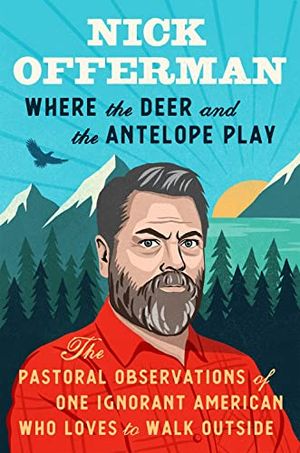
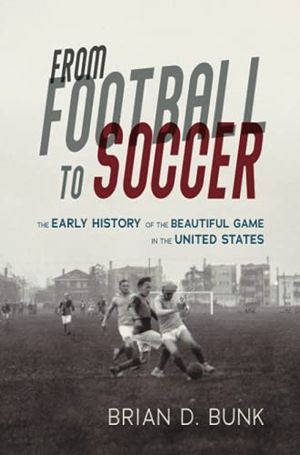
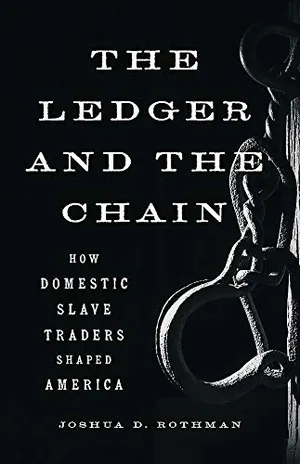
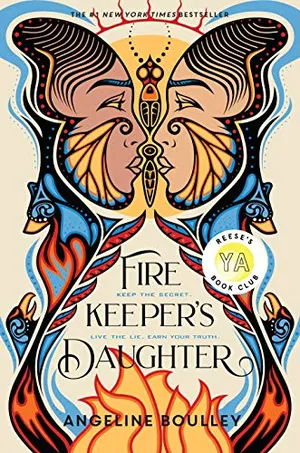
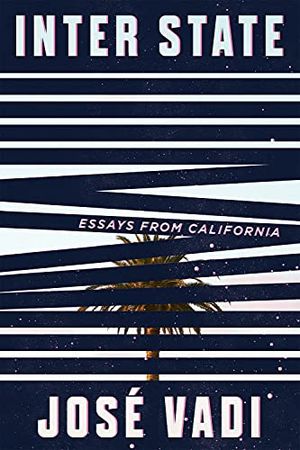
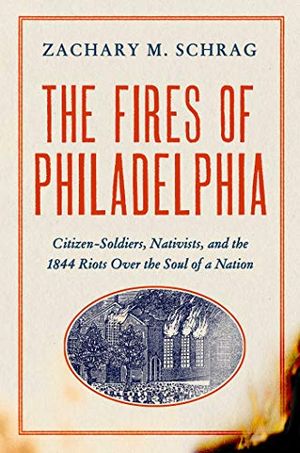
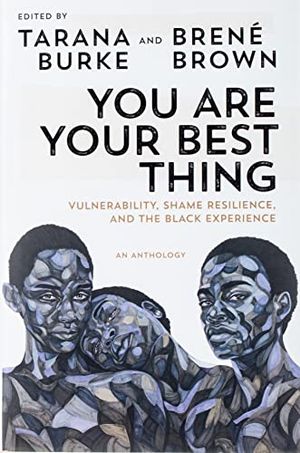
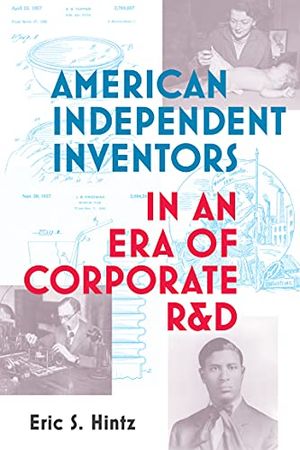
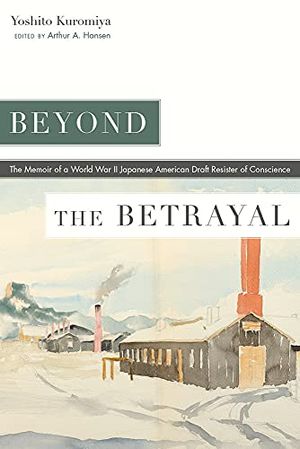
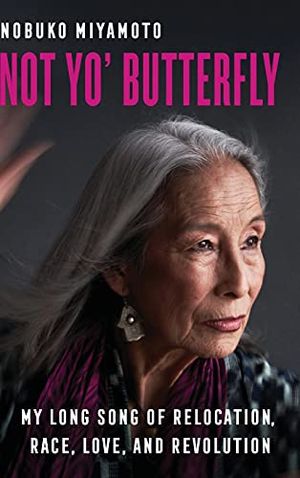
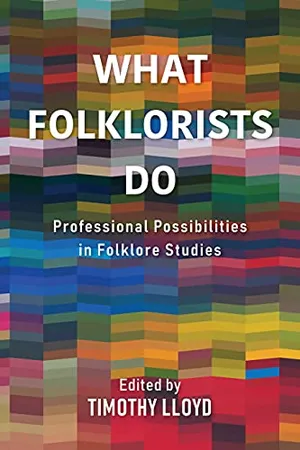
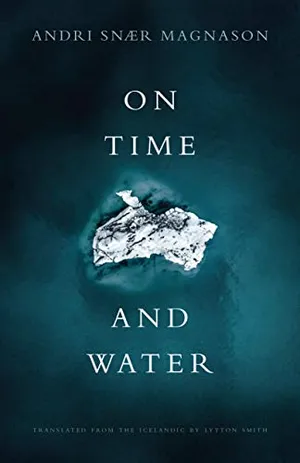
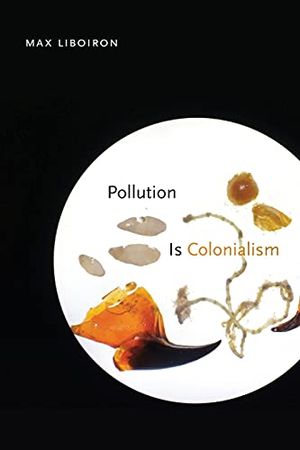
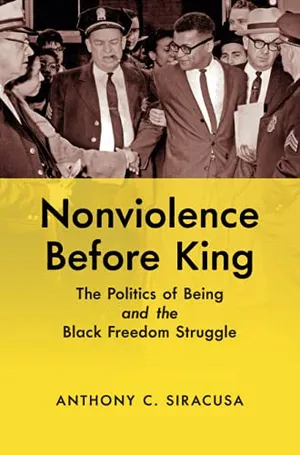
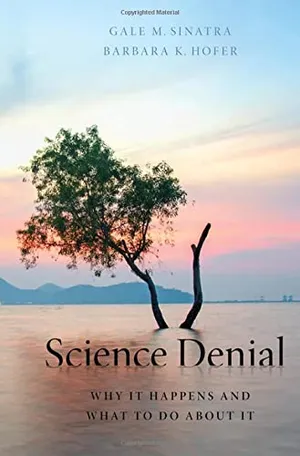
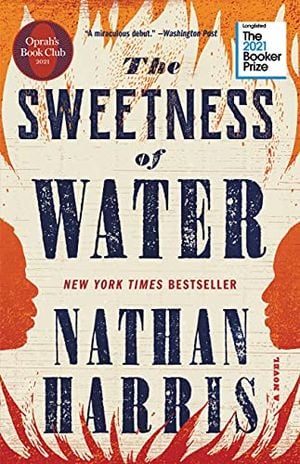
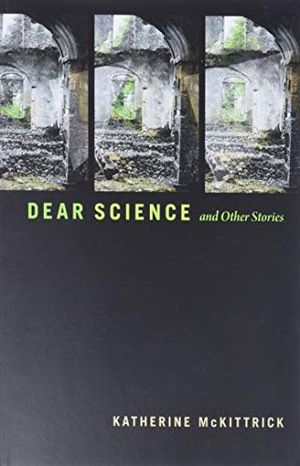
/https://tf-cmsv2-smithsonianmag-media.s3.amazonaws.com/accounts/headshot/Beth_Head_Shot_High_Res-14-v2.png)